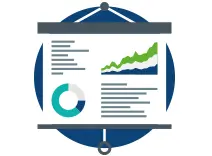
Imagine if, when you talked to a friend on the phone, you forgot everything you knew about them from your interactions over social media, email, or when you met face-to-face. Instead, all you could remember were your past phone calls with this person.
Fortunately, our brains don’t work that way, but for companies with siloed data and systems that’s precisely the position they are in when they deal with customers. In fact, they aren’t really dealing with individual customers at all; they are managing a series of unrelated interactions and transactions that take place over different channels.
If only we could see the complete trail – of phone interactions, website visits, emails, purchases, social media comments, etc. – left by every customer and prospect – this is the Single Customer View (SCV).
How to create a Single Customer View
A SCV links an individual customer to every interaction they have had with the company. While this data doesn’t necessarily need to be stored in a single central repository, it does need to be linked together and indexed using some sort of unique identifier tag for each customer.
In this way, all the data related to a specific individual can be collated and brought into a single view that can be accessed by sales, marketing, customer service, and other staff that engage with customers, as well as any automated systems that do the same.
- Discover all data held across your structured, semi-structured and unstructured data using advanced search algorithms
- Create a tagged and indexed comprehensive data inventory
- Create an indexed copy of all your data. This is your SCV.
Benefits of a Single Customer View
Achieving a SCV means you are left with a portal for accessing data about any individual customer.
Your contact centre can seamlessly manage interactions that cross multiple channels without asking the customer to repeat information; personalise upsell, cross-sell and renewals offers to meet a customer’s exact needs and circumstances; route enquiries to exactly the right team or person and proactively engage customers to prevent service issues before they become a problem.
From a marketing point of view, you can understand the commonalities of your best customers so that you can find more like them, as well as identify customer segments, lifecycle stages and purchasing patterns to inform everything from product development to pricing and payment options.
Disadvantages of not having a Single Customer View
The most effective way of marketing and selling to customers, and then delighting them on an ongoing basis, is to treat each customer as an individual.
Companies without a SCV are unable to do that. To them, a customer is the records tied to this address, the transactions from that phone number, the orders from this credit card etc. They have no way of joining all those records up to get a full picture of the individual with whom they are dealing.
Many of the greatest customer experience and marketing challenges faced today are all to do with the inability to gain a SCV: you can’t personalise products and offers without a full understanding of the customers wants, needs and behaviour. You can’t effectively meet with a customer at multiple touchpoints (email, phone, web, chat) if your organisation doesn’t know it’s the same customer each time, and you can’t proactively service them and anticipate their problems before they happen if you cannot see everything that’s going on.
If you follow the steps above, you will be in the enviable position of being able to achieve this goal.











